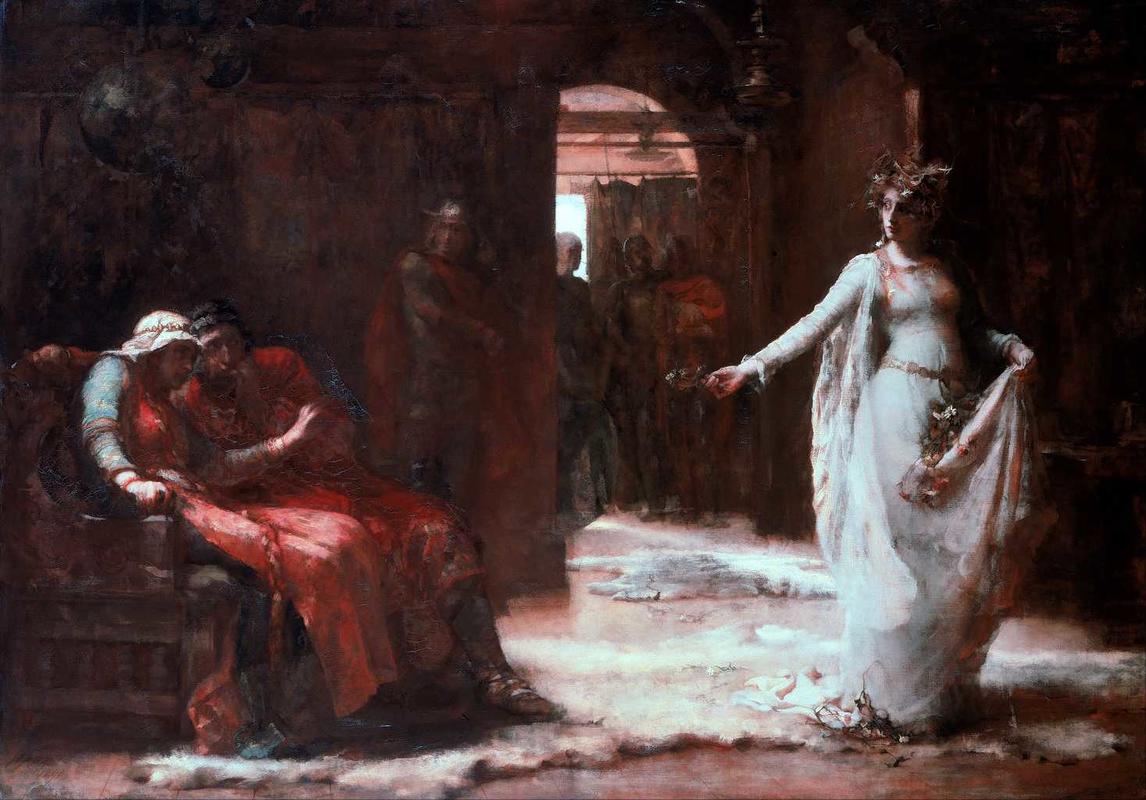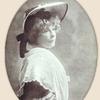More about Ophelia

Contributor
Ophelia is perhaps the most misunderstood and controversial characters in Shakespeare’s canon.
In 1890, Henrietta Rae painted this homage to the famous character. If you remember any of Hamlet from school, when you think of Ophelia two scenes probably come to mind. For being a highly analyzed character, she only appears in five of the twenty scenes that make up Hamlet. She has two famous scenes (one of which she’s not even alive in, so can you really count that?). One is her tragic suicide/funeral. The other is the one pictured above in Rae’s Ophelia. This depiction comes from Act 4 Scene 5 of the play in which Ophelia is in the grip of madness and puts on a strange performance in front of the king and queen. She stands in front of the court and begins reciting the names of flowers and herbs while laying them down at the feet of the royal couple.
Despite Ophelia’s lack of presence throughout the play, she is the most recreated female Shakespearean character. Since the play’s conception in 1599, society’s view and artistic interpretation of Ophelia was gone through many conflicting phases, from the saintly virgin to the cunning harlot and finally to the feminist hero. Viewers originally saw Ophelia as a secondary character built purely to emphasize Hamlet’s grief. And for the men, she was a blank, white canvas to project their feminine ideals. She’s basically given no background and appears to be more of a prop to be used by Hamlet. As the historical critic, Lee Edwards wrote, "We can imagine Hamlet’s story without Ophelia, but Ophelia literally has no story without Hamlet."
Hamlet and Ophelia have similar outward symptoms of madness, like speaking nonsense and frightening shifts in mood, but both acts are a ruse. However, Hamlet’s madness was labeled as a sign of his cunning genius while Ophelia’s was branded as paranoia fueled by excessive sexual desire. For many years critics classified the scene depicted above as an act of symbolically deflowering herself in front of the court during a bout of mania. Psychiatrists in the 19th century even used her character as a case study for female hysteria. A doctor of the Medico-Psychological Association in 1859 wrote, "Every mental physician of moderately extensive experience must have seen many Ophelias." Needless to say, this statement makes my blood boil.
As the times changed, Ophelia’s interpretation experienced a revival and a complete 180. Feminists provided a new narrative for Ophelia’s actions. They proposed that her feigned madness was a form of revolt against the patriarchy. She spent the last of her energy and sanity protesting against the unjust social system of the time and paid for it with her life. I believe that this makes her a feminine symbol to look up to in these trying times for women everywhere.
This painting portrays the split between the old views and the burgeoning modern. As you can see, the painting is split almost directly in half by light and shadow. The royal couple represents the old social perception of women, hence their horror and distress. Meanwhile, Ophelia stands tall and straight, illuminated by a beam of sunlight and exuding determination and strength. Like the feminist interpretations of the character, the painting places her back into the action of the play, no longer a bystander, and removes her from the stifling hold of the male characters.
Henrietta Rae’s piece opened me up to a new way of interpreting Ophelia’s character that I never learned about in school and I’m so happy to look at her in a new and inspiring light.
Sources
- http://www.liverpoolmuseums.org.uk/walker/collections/paintings/19c/ite…
- https://www.bl.uk/shakespeare/articles/ophelia-gender-and-madness
- https://medium.com/book-things/the-most-beautified-ophelia-the-duality-…
- https://www.bl.uk/shakespeare/articles/ophelia-gender-and-madness
- Lee Edwards, ‘The Labors of Psyche’, Critical Inquiry, 6 (1979), 36.











